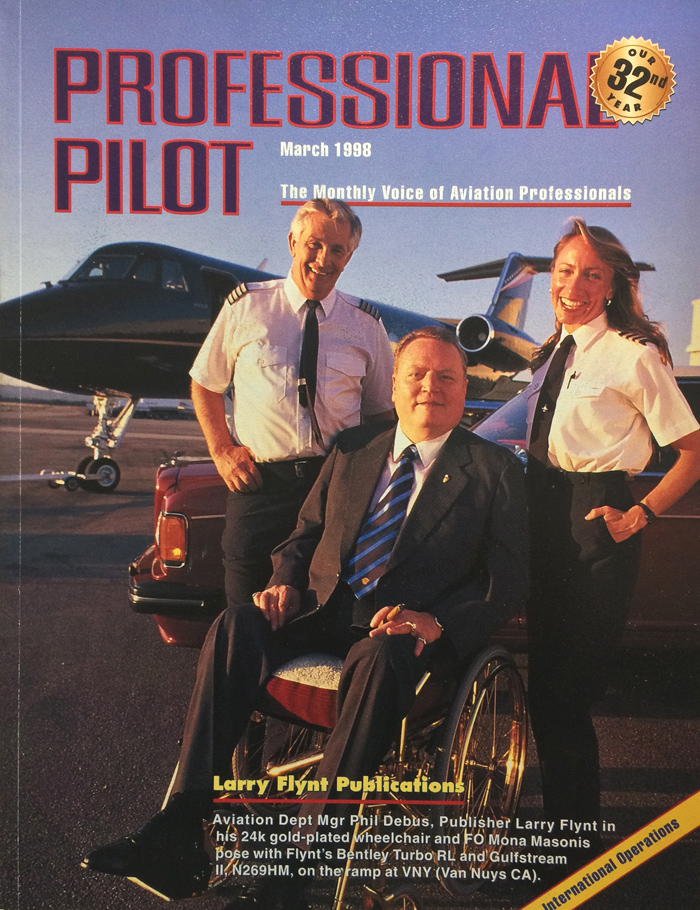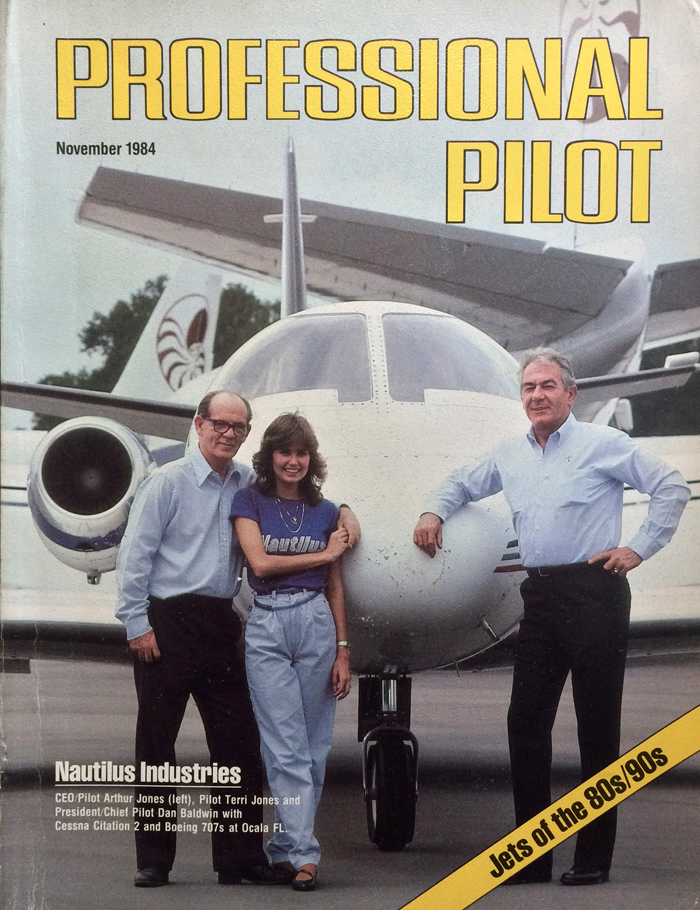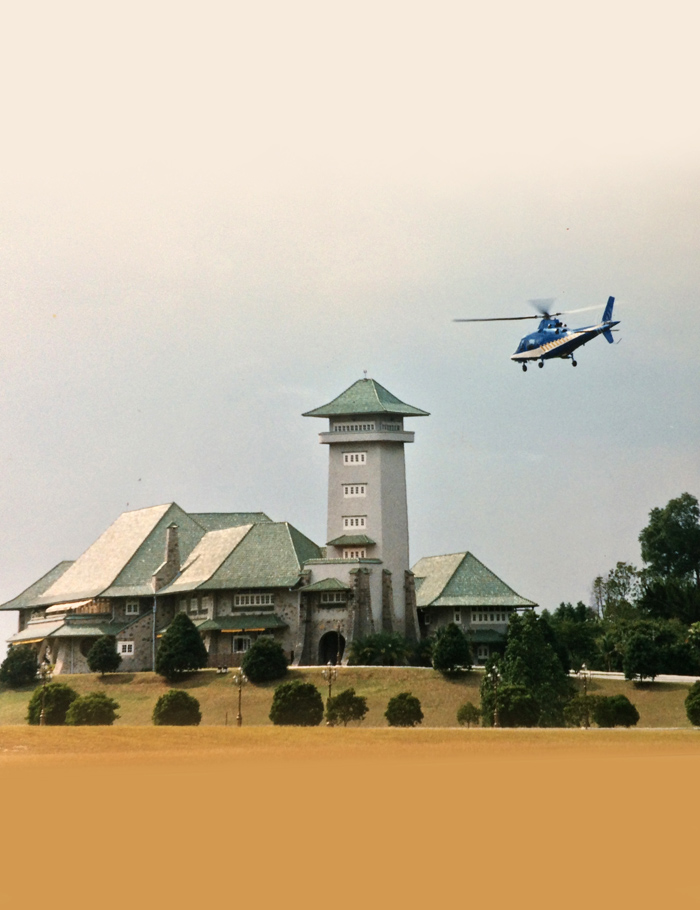Star turn for executive jets
By Grant McLaren
Rolls Royce Magazine 1998
International celebrities have joined major corporations in finding jet aircraft an essential business tool. The “offices in the sky” are as productive and indispensable as a company computer system, reports Grant McLaren.
Rolls-Royce powered executive jets have long been the aircraft of choice for Hollywood stars, international sports figures, well-heeled Sultans and business tycoons. John Travolta flies a vintage Gulfstream IISP, Jack Nicklaus propels himself around the world aboard a Gulfstream IVSP as does His Majesty the Sultan of Johor (Malaysia) and Nike Inc. Founder and CEO Phil Knight manages his global business dealings with both a GIV and a GIII. While Rolls-Royce powered executive transports had pretty well been dominated by Spey and Tay powered Gulfstream II, III and IVs the options have broadened considerably over recent years.
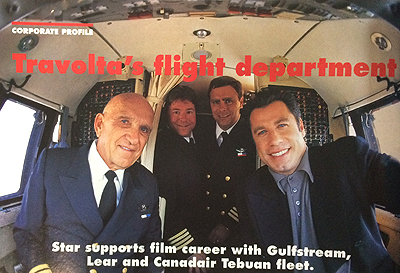
John Travolta and his crew onboard the actor’s Gulfstream II at Los Angeles International Airport
Today’s stable of Rolls-Royce equipped transports ranges from the affordable and sprightly 1900 – 2300 pound thrust Williams/Rolls-Royce FJ44 powered Cessna Citationjet, Raytheon Premier One and Sino-Swearingen SJ30 class of entry level jets to the world’s fastest business jet, the Citation X, which is driven by 6400- pound thrust Allison/Rolls-Royce AE3007Cs at cruise speeds up to Mach .92. At the top end in airborne real estate is the intercontinental executive version of the Boeing 757 of which nine have been completed to date. With ample power provided by twin 40,000-pound thrust RB211-533E4s, and a generous 118 foot long cabin, (see Rolls-Royce magazine March 1997) this comfortable vehicle will carry up to 25 passengers one-stop anywhere in the world. Perhaps the two most in-demand longhaul corporate products on the market today, however, are the 6500-nm plus range-capable Bombardier Global Express and the Gulfstream V. These top-end executive transports, powered by a pair of BMW Rolls-Royce BR710s, are the state-of-the-art in executive transport for those who can manage the pricetags of close to $40 million (with completed interiors).
Exec Jet Evolution
Executive jets first appeared in the mid-1960s with the debut of the Learjet, Lockheed JetStar, Gulfstream II and the Rockwell Saberliner. Spey-powered GIIs, with their intercontinental abilities, sold for a then-pricey $1 million and were considered by many to be the premier executive transport. Within their generous 12-place cabins all sorts of interior decor variations began showing up. There were circa-1950s Danish modern interiors, airborne suites with the English-country look of a Dorchester hotel room and all manner of experimental interior concepts. The Faberge company created a cave-like molded plastic interior for its first GII which features a built-in piano, all sorts of curves and a Spanish bartender who worked a pressure-fed bar system. Polished hardwood floors, sculptures and continental-style crystal chandeliers all began to appear together with built-in early-generation VCRs and heavy TV monitors.
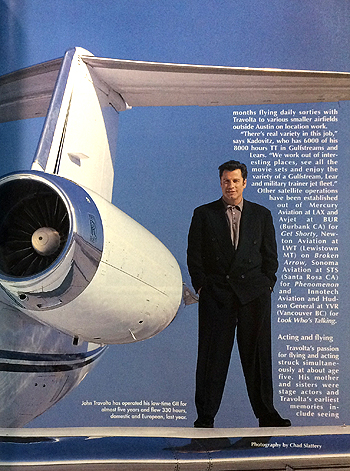
John Travolta has operated his low-time GII for almost 5 years and flew 330 hours, domestic and European, last year
By 1985, when the GIV came out, these 74,600-pound MTOW Rolls-Royce Tay powered transports reconfirmed Gulfstream’s place at the top of the bizjet market with attractive 4200-nm range capabilities. Exec jet cabin design became more mainstream by the mid-80s with subdued interiors that were more corporate and perhaps less individual. Today, you can expect expanses of fine leathers, rich wood veneers, flat panel video screens and hidden-away satphones and VCRs aboard typical large-cabin executive jets yet not so much in the way of French wall tapestries, metal sculptures and other exotica. The business jet has matured and evolved into a valuable corporate tool which is equally as productive and necessary as a company computer system. Exec jets have become, more often than not, offices in the sky and their typical $3 to $6 million interior completions are usually absolutely functional. Cabins will often transform from multi-zone meeting rooms and dining rooms to berthable arrangements offering hotel-like comfort at night. At average utilization rates of 580 flying hours a year today’s corporate jets do much to generate and hold-together global business.
A key factor in choosing an executive jet today is the level of product support you’ll receive. After investing tens of millions of dollars in one of these machines you want it to be ready to go when you need it. No less important than airframe support is support offered by engine providers. In Professional Pilot magazine’s most recent Powerplant Product Support Survey (November 1997) Rolls-Royce took top spot and swept first-place in all seven categories—AOG service, company response, service satisfaction, cost of parts, spares availability, tech reps and tech manuals. This will, no doubt, be a reassurance for those on the waiting list to receive GIVSPs as well as BR710-propelled GVs and Global Expresses.
Exec Jet Ops
Actor John Travlota has operated a GII, modified with a pair of Aviation Partners range-enhancing winglets, since 1992. A fully-rated pilot, Travolta guides his Gulfstream throughout North American and Europe an average of 350 hours a year from the left seat. While on film locations the actor utilizes his corporate jet to commute home on weekends, to attend talk-shows in New York or to get back to the studio in Los Angeles to catch-up on voice-over work. For Travolta, having an executive jet is absolutely essential and he runs his flight department with the highest level of professionalism.
“I believe in full-throttle professional procedures. We always fly the Gulfstream with three pilots, including myself, and on transoceanic flights we’ll have a flight engineer and one or two flight attendants. Most commercial airlines don’t have the flightdeck crew we have.”
Travolta has a passion for service perfection. Flying aboard this exec jet is probably as good as it gets.
“We try to run this flight department as if it were a five-star airline. I’ve created checklists for every aspect of the operation—we strive for technical perfection and passenger service perfection. We have hand-written menus, luggage tags, special meal services, top-quality bedding and time-to-destination announcements just like on the Concorde.”
Over in West Palm Beach Florida internationally-renowned golfer Jack Nicklaus considers his GIVSP to be his number one business productivity tool. Revenues at Nicklaus’s Golden Bear Inc are often in direct proportion to the amount of time CEO Nicklaus spends away from the office designing golf courses and overseeing an international web of retail operations.
“Jack has a philosophy of maximizing his time in business and he gets more done at 40,000 feet than any executive I know,” said Golden Bear President Richard Bellinger. “With the range of the GIVSP he’s able to squeeze in eight-stop seven-day Asian trips. Without a corporate jet we would have to scale back what we do.”
The more controlled environment of an executive jet makes tough travel schedules bearable. “The aircraft serves as my sanctuary,” explained Nicklaus. “I arrive in places like Japan ready for a full-day’s work. I’m not slowed down by jet lag and I stock the food I need—I never have to take risks adjusting or changing my day-to-day needs.”
The first year that Hillsboro, Oregon based Nike Inc operated a corporate jet, in this case a GIII, international sales shot up 35%. With the comfortable executive lift ability of the company jet Nike has been able to maximize and stretch the charismatic impact of Founder and CEO Phil Knight. He can attend tennis events in Germany or Australia one week and shoe factory openings in China or Indonesia the next.
“Our GIII proved to be such a valuable tool for this company that we added a GIV two years ago,” recalled Nike Director of Flight Operations Lee Crawley. “This business would not have been as successful as it has become without the advantages of corporate jets.”

Travolta studies a movie script at his airborne dining table. Table settings, interior decor and surface treatments on this jet are all inspired by Travolta
Executive jets infuse flexibility into the arena of international business, they allow management to be more productive and the payoff is generally far greater than the cost of acquiring and operating the aircraft. For Hollywood and the entertainment set, such private transport makes it possible to move about with security without being mobbed by admirers in airline terminals. For heads of state, royalty and sultans, these aircraft provide complete control of the transport process and sufficient range to go wherever required without having to put down in between.
The new generation of BR710 turbofans will soon be a common sight at executive jet airport terminals. Gulfstream is well into deliveries of the GV and Bombardier will be shipping-out the Global Express before year end. While this flying merchandise is expensive it gives international operators unique capabilities. Flying Singapore to London, New York to Tokyo and Los Angeles to Dubai nonstop will only increase the productivity and effectiveness of top world corporations. Toyota, which as been operating a GIV and a Challenger 601, has both a Global Express and a GV on order. Ultra long-range abilities will not be lost on this operator.
“We currently stop for fuel on 85% of our international operations with the current fleet,” explained Toyota Flight Department Manager Terry Haebeck. “But, with our Global Express and GV, we’ll soon be on equal footing in terms of range with the Boeing 747-400. We’ll benefit from more nonstop operations and have access to dedicated on-board crew rest facilities.”
Airborne spaciousness is, of course, always available for a price. Rolls-Royce powered executive jets not only take the form of the popular B757 but also the less commonly executive-configured B747-400. On the B747-400 side of the scale expect to be able to travel anywhere in the world nonstop and to enjoy the niceties of a formal dining room, spa, perhaps an airborne operating room and a master bedroom equal to anything you’ll see aboard a Mediterranean-based megayacht.
Whether you’re flying a Citation X, a Global Express or a B757 there are interior completion houses around the world ready to transform the interior into a mission-capable configuration with as many extras as may be desired. Waterfall Babinga, tortoise shell maple and Australian Eucalyptus have been popular veneer choices for executive transports lately as have marble and semi-precious stone facings in galleys and baths. Custom china and silverware can also be created to accent the interior theme.
Future Directions
As corporate jets typically have long useful economic lives we’ll continue to see Spey-powered Gulfstream IIs and IIIs well into the next decade. In fact, these early large-cabin executive jets are currently on their way up in the price and their performance abilities continue to be most impressive.
Clay Lacy Aviation CEO Clay Lacy, out of Van Nuys CA, recently won a world speed record in a vintage, winglet-equipped, GII with an elapsed time from Los Angeles to Paris of 10 hours and 32 minutes. He then broke seven time-to-climb world records with his Spey-powered IISP including a climb from sea level to 41,000 feet in just 6 minutes and 32 seconds.
Expect a proliferation of affordable, $3.2 to $4.2 million, Williams/Rolls-Royce FJ44 powered entry-level executive jets over the next several years together with some 300 plus ultra-long-range BR710 powered Global Expresses and GVs through the next decade. Rolls-Royce powered executive jets will soon cover the waterfront from the 6,000 lb MTOW FJ44-powered single engine Century jet through to the 255,000 pound MTOW Boeing 757 and beyond.

